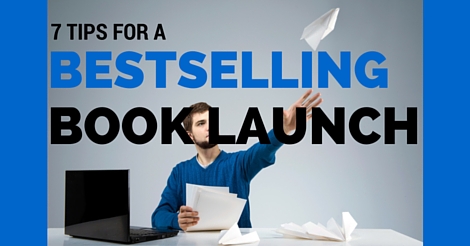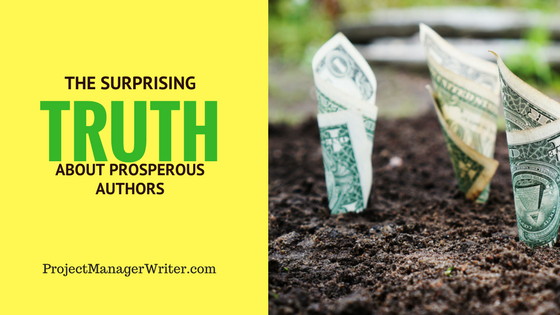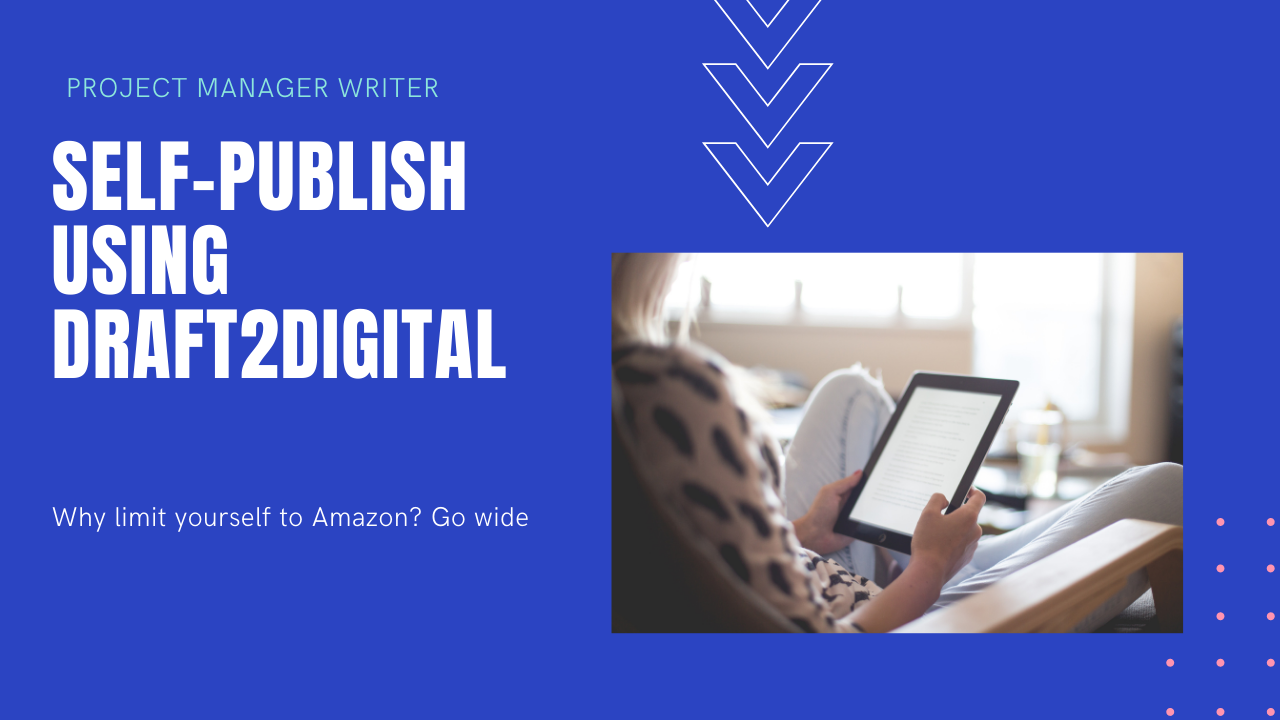Writing a book is a massive and extremely gratifying project. I shared my plan for how to write a book in 30 days in a previous post. My newest book, Author Unleashed: Simple Strategies for a Successful Book Launch (Book 2) explains how to launch your book in another 30 days. Achieving a bestselling book launch, and getting to number 1 within an Amazon Kindle category isn’t rocket science, but there is strategy involved.

There are 4 million Kindle books on Amazon today. Self-publishing basics such as quality cover design, keyword optimization, and professional editing are now the price of entry for self-publishing. If you launch a garbage book–if you cut corners–you’re going to see lackluster sales, or worse: terrible reviews.
Here are 7 tips for a bestselling book launch. Make your book stand apart from the crowd:
1. Choose your Amazon book niche carefully.
You worked countless hours on your book, and it’s finally in the hands of an editor. Have you considered which Amazon categories your book is best suited for? When you publish your book to KDP (Kindle Direct Publishing), you can choose 2 categories. (Bonus tip: email Amazon customer support and politely request that they add a third category for your book).Take time to conduct Kindle research, and choose at least one Amazon category that is less competitive, so your book can reach the top 10 within that niche. John Tighe explains this well in his book, Crush It with Kindle. Many Amazon categories can be competitive, so you want to think about where your book will perform well.
Search Amazon for books within the Kindle store. How are other books categorized in your genre? Look at their sales pages to see the overall sales numbers (if a book is ranked 10,000 in a paid Kindle store, it’s selling about 10 copies per day; a ranking of 20,000 sells 5 copies.) At 70% royalty for books priced $2.99–9.99, that adds up. Try to find a category where the top 3 books are lower-ranked for overall paid sales. Aim for 15,000 or higher in paid sales. That’s likely to be a realistic category where you can jump in and rise up through the best-seller rankings.
For example, assume you want to launch a book about how to land the job of your dreams. When I wrote this post, the number 1 and 2 book in the Kindle job hunting category were: 101 Great Answers to the Toughest Job Interview Questions (7,839 overall) and What Color is Your Parachute (8,392 overall). Those books are selling more than 10 copies per day. While you might be able to break through temporarily, you want to find a less competitive subcategory.
 Next, look at the niche subcategories to the left side of the Kindle screen. Consider another category that may suit your topic. Career Guides? Nope, 4-hour work week is #2 and that’s been a bestseller for ages (1,819 overall paid). Consider the category, Internship. Could that apply to your book? The number 1 book there is ranked 10,226 overall. A little better, but we want to try for an even less competitive category. What about checking out the Business & Money category and heading into the Economics niche? There are many subcategories there from which to choose from:
Next, look at the niche subcategories to the left side of the Kindle screen. Consider another category that may suit your topic. Career Guides? Nope, 4-hour work week is #2 and that’s been a bestseller for ages (1,819 overall paid). Consider the category, Internship. Could that apply to your book? The number 1 book there is ranked 10,226 overall. A little better, but we want to try for an even less competitive category. What about checking out the Business & Money category and heading into the Economics niche? There are many subcategories there from which to choose from:
 I moved down the list, checking the overall rank for the number 1 book until I come to the last category: Urban & Regional Economics, where the number 1 book is ranked 17,193. even better, the number 2 book is ranked 30,158. If you follow the steps to create a quality book–one that’s professionally edited, has a standout cover, and you use the other launch strategies from my book, you can expect to achieve number 2 or even number 1 in this category.
I moved down the list, checking the overall rank for the number 1 book until I come to the last category: Urban & Regional Economics, where the number 1 book is ranked 17,193. even better, the number 2 book is ranked 30,158. If you follow the steps to create a quality book–one that’s professionally edited, has a standout cover, and you use the other launch strategies from my book, you can expect to achieve number 2 or even number 1 in this category.
I did better than I ever expected using Tighe’s techniques, and highly recommend that any self-publisher read his work. My first book, Layoff Reboot, achieved number 1 in free job hunting books during my promotional period, and later reached number 5 in the paid job hunting category. According to Amazon, bestseller status is the top 100 list within a category or subcategory. You’ll be able to achieve top 100 easily; what you really want is to crack the top 10 within one or more categories.
It pays to do your research and check out how your competition is ranked. Keep in mind that Amazon changes their categories constantly. You won’t be able to choose them until you’re ready to upload your book. Generate a list of your preferred categories, but also have back-ups in mind to choose from.
2. Form a launch team (or a group of trusted advisors).
A launch team is a group of people who support your book launch. You may have heard about these–sometimes they are called “street teams.” These are people with whom you’ll engage with during the 30 or so days prior to your book launch. They’ll read your book in advance, post customer reviews, and help promote your book via social media.
A launch team is critical to the success of your book launch! The sooner you can form a team and start engaging with them–consistently–the better. Despite what you may think, your friends and family aren’t necessarily going to be your best advocates. Other authors are the best support because they understand your struggles. As you’re writing your book (or even when you’re in the idea phase), start networking with other author groups. There are several large communities of aspiring authors on Facebook; reach out to them. If you take a self-publishing course, be sure you connect with others and engage often. Offer to volunteer to be on another author’s book launch team. Then, you can learn firsthand how to run one. I recommend forming your launch team at least 30 days in advance of your launch, if not sooner.
I create a private group in Facebook, and let my team know the expectations clearly up front–that they read my book in advance, and have an honest review ready to go when I release my book in “stealth mode” (when my book is live on Amazon, but I’m not actively promoting it yet). A bonus of forming a launch team, is that you build relationships and can leverage the same group for future launches.
3. Give away your book for free.
I recommend that all first-time authors publishing using Kindle Select. This is a program where Amazon is the sole distributor of your book. The downside is that you’re locked in for a 90 day exclusivity period, but you’ll be able to leverage the marketing power of Amazon. Since Amazon has an interest in making sure their Kindle Select books perform well, they have algorithms that help your book, particularly when it performs well early on. This kick-start to your sales can help trigger additional Amazon marketing of your book.
Kindle Select enables you to make your book free for anyone to download up to 5 days during each 90-day Kindle Select period. Why on earth would someone make their book free? It’s all about finding readers and generating buzz for your new book. Plus the free downloads influence the ranking once you move your book to paid. I recommend 2-3 days free with promotions. You’ll receive a ton of downloads in that time. Once your book achieves number 1 free book in its category, move it to $0.99 and it becomes an impulse buy. You can ride out the momentum of your high rankings and achieve a bestselling rank.
Another benefit of starting with Kindle Select for your first book is that you only have to deal with one platform. You’ll see all your sales on one screen, and only have one website to check. Later, as you write more books, you can venture outside of Kindle Select. Of course, you’ll always want to use Amazon as your primary book sales channel because they have 74% of the U.S. e-book market share. However, avoid locking yourself into exclusivity if possible.
I used Kindle Select for my first book and was pleased with my results. However, when I published my second, I published to Kindle non-exclusively, so I could diversify my sales channels. Once I made sure my book was formatted correctly in Kindle, I published through Smashwords.com to take advantage of additional book distributors such as iBooks (51 countries). Another alternative is Draft2Digital, which offers an easy file conversion tool.
4. Offer a free bonus to readers.
Readers want value. Just because someone buys your book, doesn’t mean they are going to head over to your website and join your email list. The truth is, most of the people who download your book for free will never even read your book, let alone visit your website. People are inundated with free books. When was the last time you read a book from cover to cover? I recommend offering something of value that relates to your book topic. Here are bonus tools I offer up-front in my book:

An early page from Author Unleashed Book 2
This is easier to do with non-fiction. For example, you can offer a workbook or infographics that accompany your book. But fiction writers can and SHOULD offer a freebie also. Ideas include: character background, deleted chapters, chapter previews from upcoming books, or behind-the-scenes videos (make sure they are professional).
The point of offering a freebie is to drive readers to your website where they will subscribe to your email list. Building up a reader community is important when you’re building an author career, and helps dramatically with future launches.
5. Blog like crazy and promote your book on social media.
During the weeks leading up to your book launch, you should start posting new blog content more frequently. The week of launch, you should post content nearly every day. Be sure to end your blog entries with a call to action to buy your book. Additionally, you want to generate social media content and “bank it” so you have messages ready to pull off the shelf and post during your launch week. I provide a sample social media marketing plan in the Author Unleashed workbook, which you can receive by signing up for my email newsletter (on the right side of this page).
In the 30 days prior to launch, reach out to other authors to potentially swap guest blog posts. Generate content that has value. Ask your email subscribers what they are interested in, or where they need help. Do anything you can think of to help generate buzz.
6. Don’t be afraid to outsource.
Sadly, we can’t be good at everything. Now that I’ve self-published 3 books, I’ve learned which elements of self-publishing I’m good at and which items are best left to professionals!! I got burned on my first book because I overspent on my cover to the tune of nearly $400. While the cover turned out well, there are considerably cheaper sources of good covers.
I tried to go the DIY route for my second book cover. I set up an account on Canva.com and decided I would make my own cover and save a ton of money. I ended up with a cover that was mediocre. Cover design, I learned, was not my strength. My time is better off spent writing content and marketing. Since then, I found a reasonably priced cover design service on Fiverr.com and was happy with the resulting cover for my Author Unleashed series. The $26 cover design is so cheap, I can buy new ones every so often, just to stay current with design trends.
My rule of thumb now is that if people are selling services on Fiverr or Upwork at an hourly rate that is less than the cost of my time to up-skill, I will outsource it. Going forward, I always outsource editing, cover design, and Createspace (print-on-demand) formatting.
7. Write a series.
Offering readers a series with the first book free is one of the most powerful marketing tools available. Customers are eager to download free Kindle books, and you can find many free/low cost services to promote your book during it’s free period. In Author Unleashed Book Two, I describe these services and the logistics in detail. This being my first series, I’m considering offering Book 1 permanently free (perma-free). This means the book will be free long-term with the goal of continuing to find new readers and drive traffic to my website.
Series are an excellent way to hook readers in the hopes that they’ll buy your other books since they invested the time to read the first. Many fiction authors have a permafree book to entice readers, and if you’re considering fiction, a series will yield the best results. Think Hunger Games, Wool, and Twilight.
There you have it. Self-publishing is not rocket science, but there are many moving parts. Below is my plan that you can refer to, and/or read more about it in the Author Unleashed sequel.

Want more detail on how to launch a bestselling book? Click here to buy Author Unleashed: Simple Strategies for a Successful Book Launch (Book 2) today!
Haven’t read Book 1? No worries, get it now by clicking here.






Leave A Comment